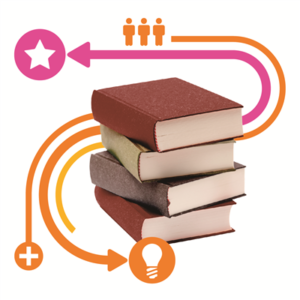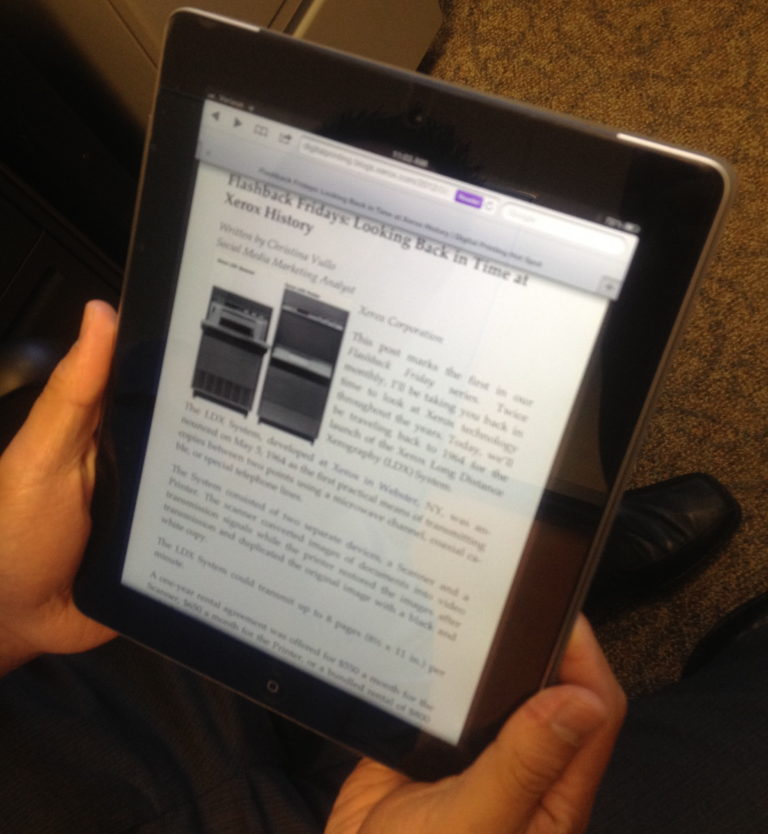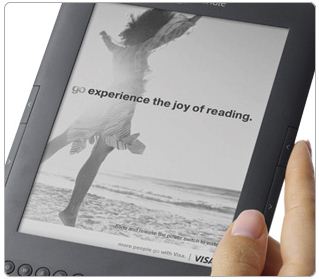With the growth in e-books, anyone printing textbooks (or any form of educational material) has reason for concern. Digital editions reduce the cost of textbooks while enabling teachers to cost effectively do what printed textbooks cannot—customize their course material to suit their specific needs. But is there a backlash for learning?
Recently, I spoke with Brian Powell, vice president of student affairs and technology for The John Carroll School, a private high school in Bel Air, MD. We spoke about his experience with digital vs. hard copy textbooks, and the conversation had a critical takeaway for anyone producing printed materials, whether for the textbook market or not.
Q: What are your thoughts on digital vs. hard copy textbooks?
Powell: I was a teacher before I became a VP here, and I taught more classes without a textbook than with one. I used textbooks my first couple of years, but after my second year, I realized that no textbook covered the content the way I wanted to. For awhile, I was teaching a non-AP version of human geography, and all the textbooks were geared toward getting students ready for the AP exam. There was no textbook that met the needs of my class, so I had to create my own.
Q: Did you provide printed copies of the units to the students?
Powell: No, I’d share the units through the course website, then the students would read them and we’d discuss. For my AP government class, I did use an online textbook.
Q: Do you use hard copy books at all?
Powell: I still do some teaching, and for my sophomore government class, we do have a textbook. There are 18 units and 700 pages (just a massive book for students to lug around), and I can realistically cover only 300 pages in a semester. If I had the option to create my own textbook—a la carte—that would be ideal.
Q: With full-color print-on-demand production, the technology is certainly there to do that. Why don’t you?
Powell: The simple answer is cost. I did have a textbook company come and talk to me about customized textbooks, but it’s a 50% markup. You’re getting fewer pages and paying more for them. I just don’t see the value for the school.
Q: I’m sure the kids love lugging around 700-page textbooks!
Powell: All of our students have laptops and the option sign onto the online version, too. They don’t have to take home the hard copy books if they don’t want to.
Q: Do you feel that the students get the same educational value when reading digitally versus in hard copy?
Powell: I’ve read little on that, but mostly as it relates to typing class notes vs. handwriting them. I haven’t read as much on digital vs. hard copy textbooks. One thing I can say, though, is that I am personally more comfortable with reading in print. I find myself less distracted and better able to focus. That’s why we give the students the ability to do both.
 Q: Is there a school-wide policy regarding digital vs. hard copy textbooks?
Q: Is there a school-wide policy regarding digital vs. hard copy textbooks?
Powell: It’s something that we wrestle with. We used to have paperless advocates in the building, but they’ve been quiet lately. We have been doing 1:1 computer education for more than a decade now, but I require my kids to take notes in a paper notebook. With all the distraction from mobile devices, the multisensory environment can be a deterrent to learning.
Q: Is this why you believe e-books haven’t taken off?
Powell: Could be. Texas and California lead the way in e-textbooks, but even they haven’t gone to e-books for a lot of their classes.
Q: Where do you see value in highly focused content?
Powell: Some of my law professors at Penn State created their own textbooks because they pulled their own case law. They knew these cases and used them to teach elements of the law they wanted to focus on. But if I’m teaching high school government, there is no reason to reinvent the wheel. Plus, there is the cost. A new textbook can be $130, and students may not even use half the book.
Q: It’s no wonder the textbook rental business is so large.
Powell: It’s already huge, and it will continue to grow. Are these students ever going to refer to their high school government book again? Probably not. Printed textbooks are really expensive, and the editions don’t tend to be significantly different from 10th to 20th to justify updating them very often. The textbook industry itself might push us into the e-direction.
Q: What about the research showing that children learn better from printed books? I think of the study conducted by the University of Stavanger in which 57% of the research subjects were able to get 100% of details correct when reading in print, but only 44% were able to do the same when reading an e-book. I’ve read a number of studies with similar results.
Powell: If there is research (and we know that there is), and it’s overwhelming, then the textbook industry needs to get that into the hands of decision-makers. Say, “Here is the research. Don’t stop buying paper books and here’s why.” But the argument needs to be comprehensive and lock tight. With costs being such a huge issue, they need to be able to say, “If you are going the e-book route, be prepared for your kids to have lower scores and lower recall and here’s the data to support it.”



